How our researchers are helping to save sea life
18 May 2023
Feature: Preserving the delicate balance of life in under-threat marine ecosystems takes effort. Owen Poland talks to University of Auckland scientists about work to protect this precious environment for future generations.
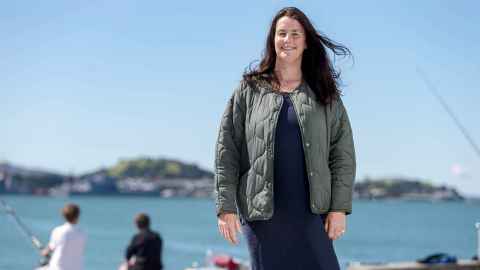
Whether it be the whales that swallow millions of microplastics every day in the Hauraki Gulf or the giant sea sponges that have melted off reefs in above-average sea temperatures, there are many signs our marine environment needs help.
“We’re in a biodiversity crisis, we’re in a climate crisis, we’re in a sustainability crisis and we’re getting close to 10 billion people on the planet,” says Simon Thrush, a professor of marine science and the director of the University of Auckland’s Institute of Marine Science.
New Zealand has about 18,000 kilometres of shoreline, with more than 300 estuaries or harbours, plus an exclusive economic zone that measures 1.3 million square nautical miles.
“We’re very closely tied to our coastal oceans culturally, recreationally and economically, we see value in the natural environment, and for many people, the best chance we have to easily get into nature is to dive into the water.”
Professor Rochelle Constantine has spent the past 30 years observing the behaviour of large marine species like whales, dolphins and sharks and is better placed than most to observe the changes in their numbers.
Rochelle says what were once considered ‘anomalously warm years’ have now become commonplace. She says there are serious consequences to having had three consecutive La Niña weather cycles, which have pushed up sea temperatures by more than five degrees Celsius in places.
Mega-fauna like the sei whale or Bryde’s whales can survive and thrive because of their ability to move large distances and change their diet, but it’s not so easy for smaller cetaceans like dolphins, whose target prey have moved further out into the Hauraki Gulf as temperatures rise.
“If you have less flexibility in your diet or less ability to capture prey, then you are more likely to be compromised by climate change,” says Rochelle.
Further down the food chain, sea sponges are also feeling the heat. In Fiordland, millions of sponges were subjected to mass bleaching when sea temperatures rose by five degrees above normal over the past two summers – although many have recovered their colour since temperatures fell.
The loss of vitality and abundance of many of these species of big animals has happened without us really noticing.
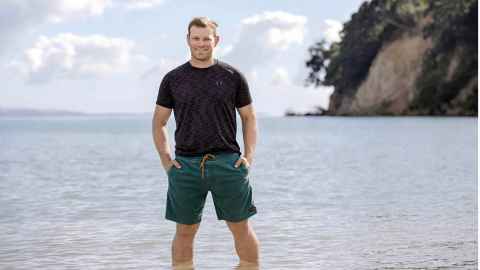
Stretching across 4,000 square kilometres are the glittering waters, islands, fisheries and beaches of the Hauraki Gulf. There, marine heatwave conditions averaging two degrees above normal were recorded for all but two months of 2022 and resulted in widespread sponge necrosis (death of cells) among the Ancorinidae species, which can measure up to two metres wide and a metre long.
“We’re talking about massive marine organisms that are suffering,” says marine scientist Dr Arie Spyksma, a research fellow based at the University’s Leigh Marine Laboratory.
To better understand the underlying causes, Arie has tapped into funding from his Live Ocean Foundation research grant to run lab tests, which appear to confirm that the sponge necrosis is temperature driven.
What’s encouraging is that tissue heals over as temperatures cool, but if the ocean continues to warm he says, “It’s potentially going to be a more frequently occurring event that might lead to worse outcomes for the sponge communities than if it was just a one-off.”
Long recognised as a global hotspot for mega-fauna diversity, the Hauraki Gulf has become a giant laboratory for the multifaceted Pulse of the Gulf project, which has attempted to unlock some of its ecological secrets – especially during what’s called multi-species feeding associations or ‘work-ups’.
Since 2019, researchers have conducted more than 45 field trips using behavioural observation, drone footage and acoustic data to better understand the interactions between various species of marine mammals, seabirds, sharks and their prey.
Eight different communities were identified, but Rochelle says the ecosystem changed when Bryde’s whales switched their diet from small fishes to zooplankton as sea surface temperatures rose.
“One whole community just fell apart because the Bryde’s shifted their diet.”
Artificial intelligence has been developed to audit video footage collected by drones tracking the behaviour of different species in a community. This gives a nuanced understanding of ‘who blinks first’ when it comes to survival.
For Rochelle, it’s about understanding the mauri or lifeforce of the Gulf. Work-ups that previously lasted around 30-40 minutes are now lasting little more than a few minutes, and there’s been a massive loss of fish, including kahawai and tarakihi, as well as seabirds like the white-fronted tern.
“That loss of mauri, that loss of vitality and abundance of many of these species of big animals has happened without us really noticing.”
The warmer waters of the Gulf have also attracted more oceanic manta rays from the tropics, and many are now being tracked with satellite tags to understand their migration and foraging patterns.
“With climate change, they’re changing their movements, but that puts them at risk from interactions with fisheries and vessels that we’ve not really thought about,” Rochelle says.
The Pulse of the Gulf project also revealed that every Bryde’s whale was ingesting an average of 3.4 million microplastics every day – about the size of a softball – after feeding on zooplankton.
While microplastics (defined as plastic particles less than 5mm) can be colonised by microbes, which may have some nutritional value, the ingestion of microplastics by zooplankton and other organisms can have negative consequences. Microplastics can also absorb and concentrate toxic organic substances, and studies have shown that these can then be transferred up the food chain.
Rochelle worries about the long-term impact of zooplankton ingesting something that can be half their size.
“Will that compromise the zooplankton community; does it compromise their ability to thrive?”
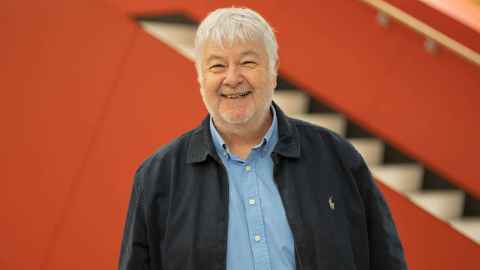
It’s not a basket case ... There are a lot of positive things about the Gulf now. But we can’t just let the place sit in this kind of bureaucratic limbo.
New Zealand’s status as the ‘seabird capital of the world’ is also under threat, with 90 percent of species now threatened with extinction. The most immediate concern is for seabirds like petrels and shearwaters, which are struggling to reach plankton in deeper waters.
“Around Auckland, the poor little chicks are just so much lighter and we think it’s because of the parents taking longer to find food,” says Dr Brendon Dunphy, senior lecturer in the School of Biological Sciences, who is leading a project to investigate the decline of the tītī or sooty shearwater in the North Island.
Funded by a $1 million grant from the MBIE Endeavour Fund, the project has been co-designed with Māori muttonbirding communities who are eager to preserve the mana and mauri of the tītī.
By tracking the birds’ migration with GPS tags and sampling feathers to assess stress levels, Brendon hopes to develop predictive tools to improve their climate resilience.
“One of our goals is to provide as much information to kaitiaki (guardians) to assist them in making management decisions.”
The launch of the University’s new multi-million-dollar research vessel Te Kaihōpara (its name means ‘the explorer’) in January also signals a new era in the campaign to revive a troubled and fast-changing Hauraki Gulf.
“Te Kaihōpara will enhance our teaching and research and support the wider push to find solutions to our environmental challenges,” says Simon.
“We now have more capacity to sample the seafloor and deploy increasingly sophisticated equipment and analytical instruments.”
Among a long list of goals for the vessel is to better understand the potential for carbon storage in coastal ecosystems, including the role of destroyed kelp forests and the flourishing of sea urchins, which have thrived because natural predators such as snapper have been overfished.
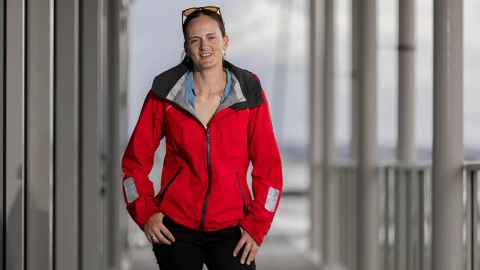
These [mussel beds] are so far gone that we have to do something more active to help.

Despite the fact that farmers can earn carbon credits for planting trees, Simon says the role of marine ecosystems in storing carbon – known as blue carbon – has been largely ignored even though New Zealand has more than 20 times its land area in the sea.
“What we’re after with carbon in a climate-change world is the capacity to store it while we maintain the biodiversity of the ecosystem,” he says. “The more carbon we can lock up, the better it will be in terms of our trajectories with climate change.”
Emeritus Professor John Montgomery is a firm believer in the power of complex modelling systems, which can feed into climate models to gain a better sense of the relationship between oceans and the atmosphere.
“Those models that are able to predict future states are really critical to gaining support and optimising the interventions that we can and will do to improve things.”
Fisheries are part of a broader process, and during his 12 years as director of the Leigh Marine Laboratory, John oversaw a study which showed that about 11 percent of the juvenile snapper found within a 40-kilometre radius of the Cape Rodney-Okakari Point reserve came from adults inside the small Goat Island Marine Reserve.
“That negates some of the criticism of marine reserves, that it’s just putting fisheries pressure elsewhere. In fact, it’s a win-win for fishing and for protection.”
Much more controversial is the idea of charging for a recreational fishing licence which John says might encourage amateur fishermen to record their catch and “create a kind of culture within the recreational industry to be more environmentally focused than they tend to be”.
Another remedial option, says John, is to re-establish lowland forests as sediment filters to create “a kind of freshwater swampy wetland” around estuaries and harbours, which would reduce the sediment load entering estuaries.
A much more difficult problem to solve is the issue of sediment pouring into the Gulf from the Hauraki Plains, which he describes as a legacy ‘mountains to the sea’ issue that traces back to changes in land use when Europeans arrived.
“There’s a lot of good stuff going on with respect to riparian planting and trying to reduce sediment in the waterways,” says John. “That’s what needs to happen and eventually it will have an impact, but it’s going to be a cross-generational time before that comes through.”
The warming climate contributes substantially to making all extremes more so, and the damage increases exponentially.
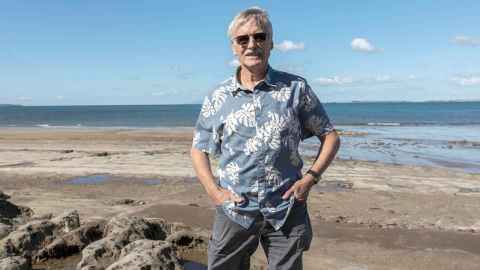
Of more immediate concern is the restoration of mussel beds that were wiped out decades ago by overfishing and bottom trawling.
“These places are so far gone that we have to do something more active to help,” says marine science lecturer Dr Jenny Hillman from the Faculty of Science. She is collaborating with Ngāti Whātua Ōrākei, Ngāti Manuhiri and Ngāi Tai ki Tāmaki to restore long-lost mussel reefs.
Since 2021, more than 200 tonnes of farmed mussels donated by the seafood industry have been dropped into the water at Auckland’s Ōkahu Bay and near the Mahurangi Peninsula in what appears to be a promising effort to restore biodiversity.
“We found increased numbers of small snapper, for example, which are obviously important fish species in both places. So the beds are having a benefit,” says Jenny.
Additional research is being undertaken to determine other benefits, including the ability of mussel beds to help sequester and store carbon. A more pressing mission is to investigate the impact of predators that feed on shellfish and interfere with the recruitment pathway of mussels which are necessary to establish long-term self-sustaining beds.
And while divers with cameras have previously been used to monitor sites, Jenny’s team is looking to deploy remote ‘bivalve gape sensors’ in the form of tiny magnets that attach to either side of a mollusc to monitor whether they’re feeding normally.
Artificial intelligence is also being used, in a collaboration between the Institute of Marine Science and the School of Computer Science, to build a 3D structure of how beds are developing.
“That will be really exciting because it’ll make a big difference being able to see what the beds are doing and being able to map them and get this really important data out in a cost-effective way,” says Jenny.
There’s a lot of good stuff going on with respect to riparian planting and trying
to reduce sediment in the waterways.
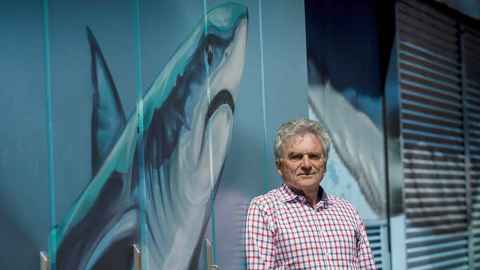
Meanwhile, a government proposal to establish 19 new protected zones in the Hauraki Gulf and develop a Fisheries Plan that restricts bottom trawling and Danish seine fishing methods to what were described as carefully selected access areas or ‘trawl corridors’ has been met with a mixed reaction by the marine scientists.
For John, it’s “a step in the right direction,” although he would like to see something more radical like a complete ban on bottom-contact commercial fishing. Rochelle also says New Zealand has to have “some quite big discussions” around what marine protection looks like.
“I don’t know that what they’re proposing is bold enough,” she says.
Only 0.3 percent of the Gulf is currently in formal protection, and Simon says there’s a lack of specifics about what’s being proposed and “no rigorous action plan” between government agencies that also takes into account the need for land-use changes.
“It’s not a basket case, it is possible to save it. There are a lot of positive things about the Gulf now. But we can’t just let the place sit in this kind of bureaucratic limbo.”
Simon hopes future decision-making reflects the te ao Māori approach where living and spiritual realms are interrelated, and he’d like to see more decisive action such as the declaration of rahui (temporary bans) by many iwi and hapū to protect the likes of depleted scallop beds.
“We see that many iwi are playing a more prominent role in decision-making around our environment and they’re driving change, often way faster than government agencies are driving change.”
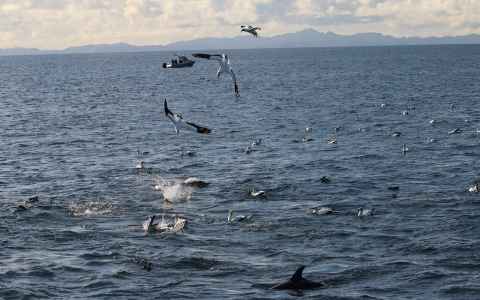
We see that many iwi are playing a more prominent role in decision-making around our environment and they’re driving change, often way faster than government agencies are driving change.
Meanwhile, climate scientists like Dr Kevin Trenberth are warning of more extreme weather events as oceans warm. The honorary academic in the Department of Physics says warmer oceans have provided a lot of extra fuel for the storms that led to devastating floods in Pakistan, California and Australia in the past two years.
“While the recent flood disasters are not directly caused by climate change, the warming climate contributes substantially to making all extremes more so, and the damage increases exponentially; a 10 percent increase in rain might lead to 100 percent increase in damage.”
What is certain is that there’s more awareness than ever before about our warming oceans, the threat of climate change and the need for action. Simon says conversations about having a better relationship with our natural environment, which would have been hard to start before Cyclone Gabrielle, are a lot easier to start now.
“The trick is that we make change fast enough for it to actually count.”
RESEARCH VESSEL
The University’s multimillion-dollar marine research vessel Te Kaihōpara is part of a campaign to help the Hauraki Gulf. As an example, Revive Our Gulf, a collaboration between the University, the Nature Conservancy and the Mussel Reef Restoration Trust is working with Ngāti Manuhiri to re-establish mussel beds.
Associate Professor of Marine Science Nick Shears says the 15.9m catamaran will support many research activities including scientific diving.
“It provides us with access to the offshore islands at a time when we are seeing unprecedented changes in the Hauraki Gulf. The offshore islands are really important to see what’s happening.”
Olympic gold medalwinning sailor Peter Burling, Live Ocean co-founder, says the boat is “going to allow so much great research. Live Ocean is stoked to see
the University put so much emphasis on it”.
Fellow gold medal-winning sailor and Live Ocean co-founder Blair Tuke says there’s so much that’s still unknown in our marine environment.
“We need to get data to learn about it and take it to the public to get people’s attitudes to change.”
Local iwi Ngāti Manuhiri gifted the name Te Kaihōpara and the boat was funded by the University and a philanthropist. The aluminium vessel was built
in New Zealand and can carry 25 people.
More about the boat.
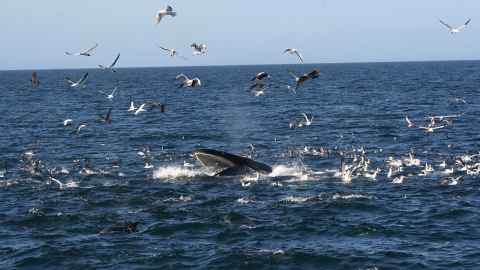
This feature is the cover story in the Autumn 2023 Ingenio magazine, the University's publication for alumni and friends.
ALUMNI EVENT GUEST SPEAKER
In June, Professor Rochelle Constantine will present a talk in Hong Kong, ‘Ocean Life – Connecting Us Globally and Locally’.
See auckland.ac.nz/hk for more information.